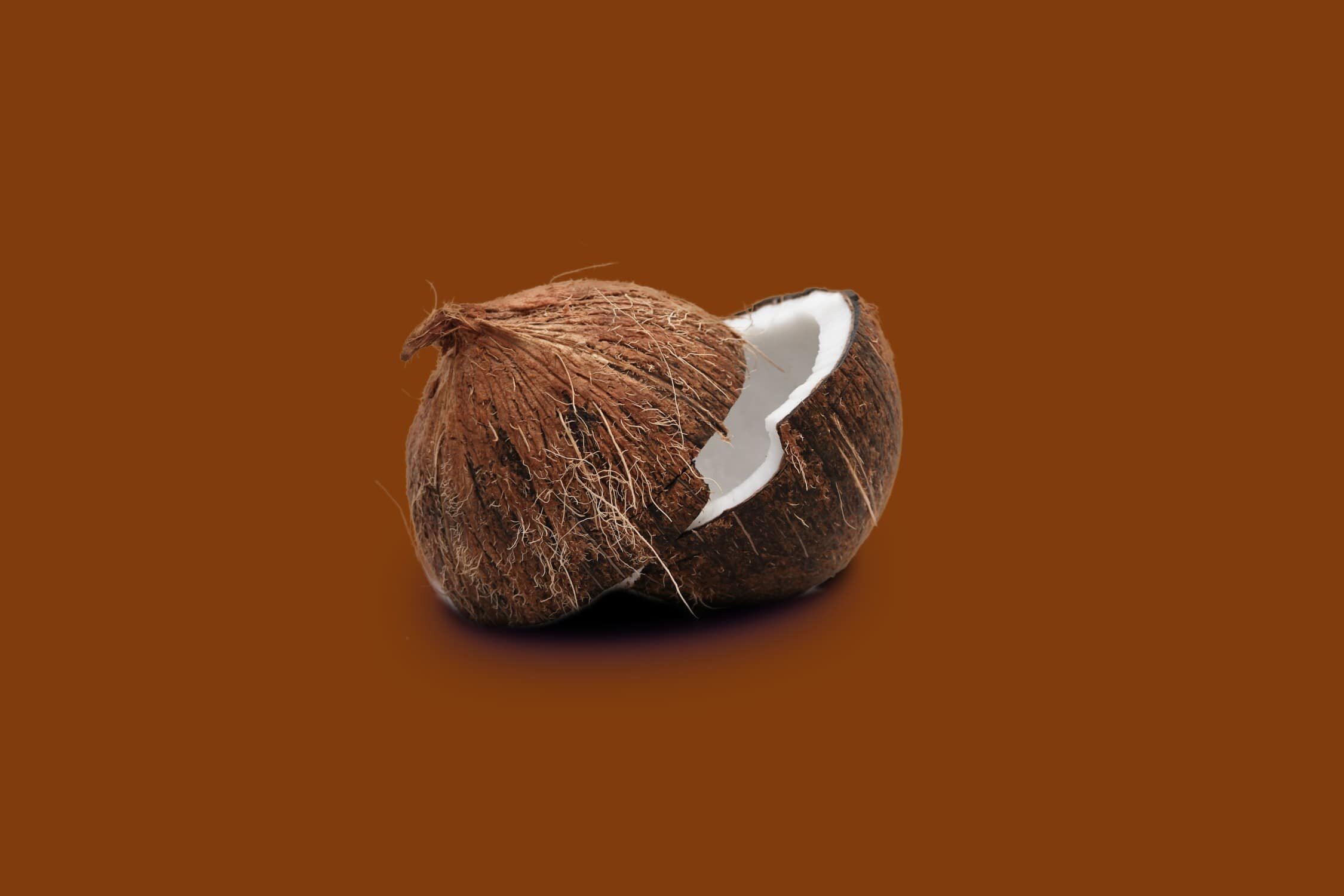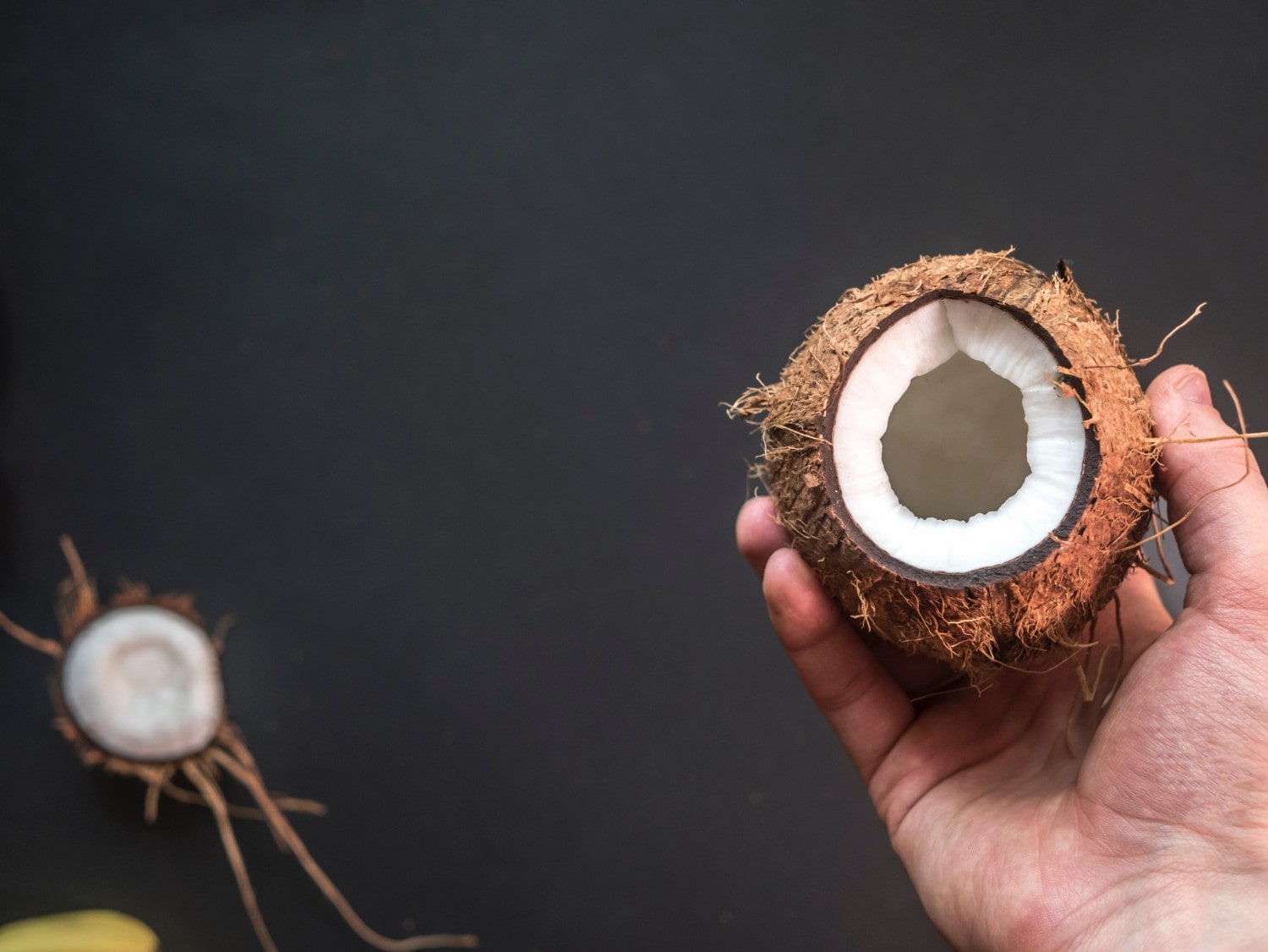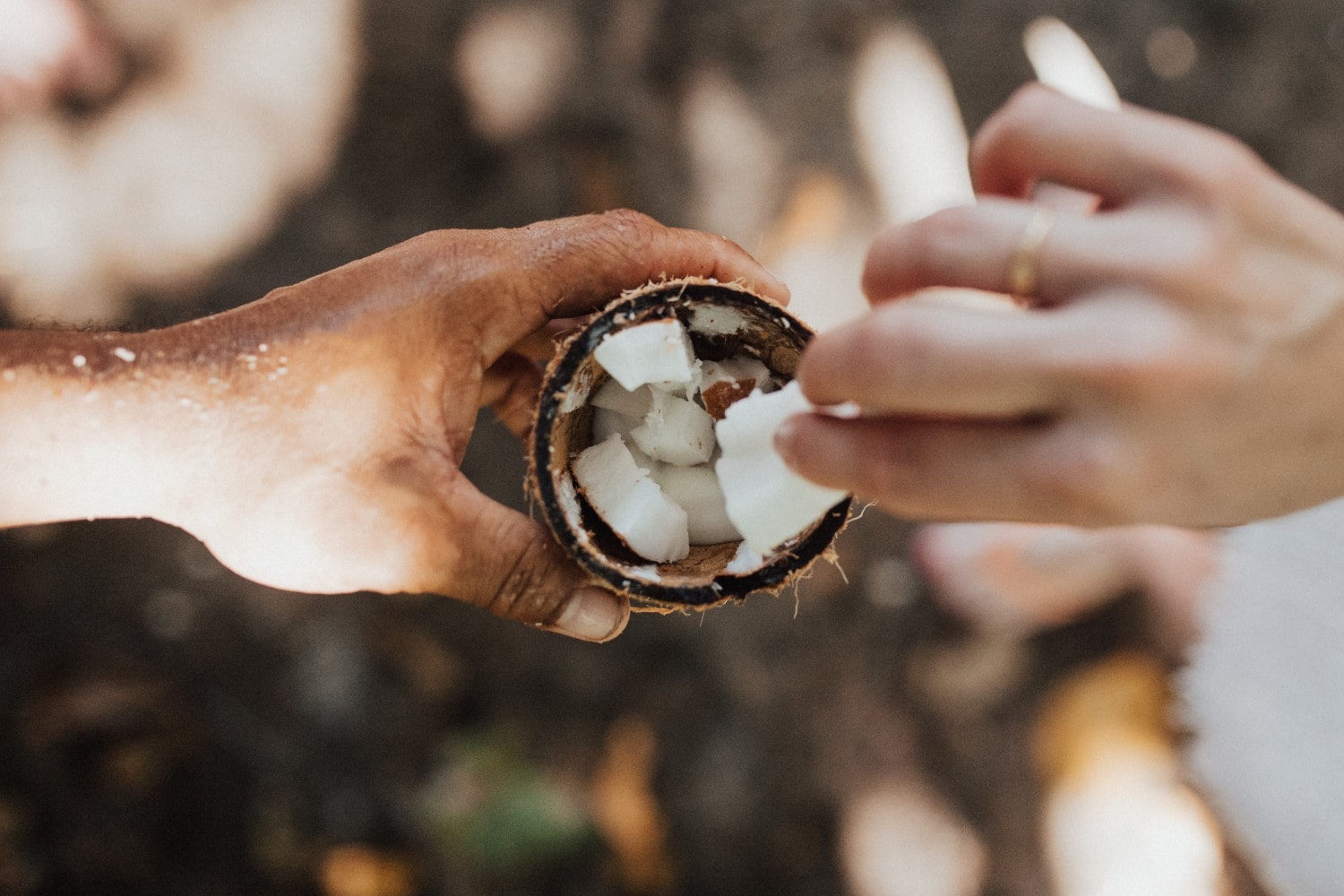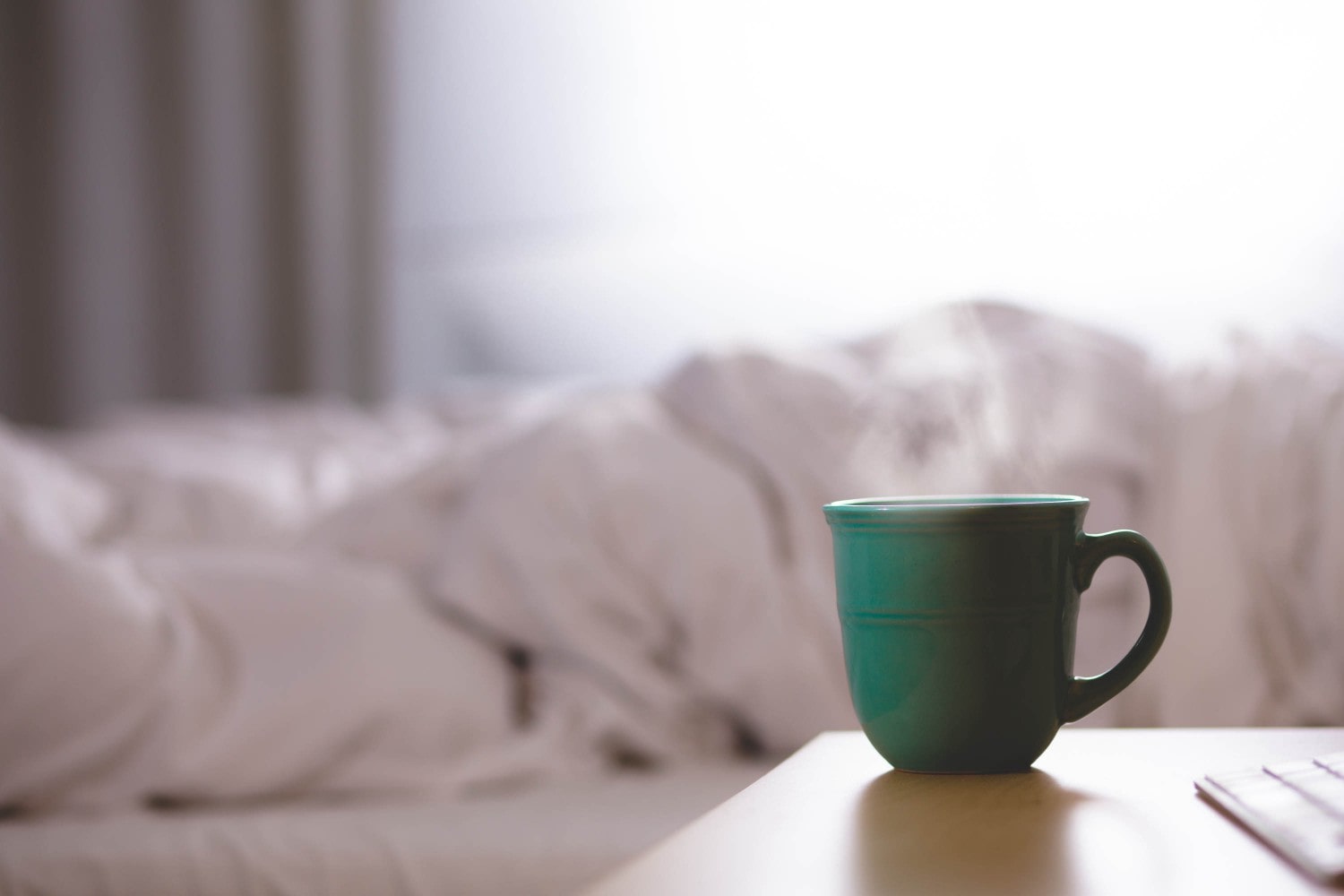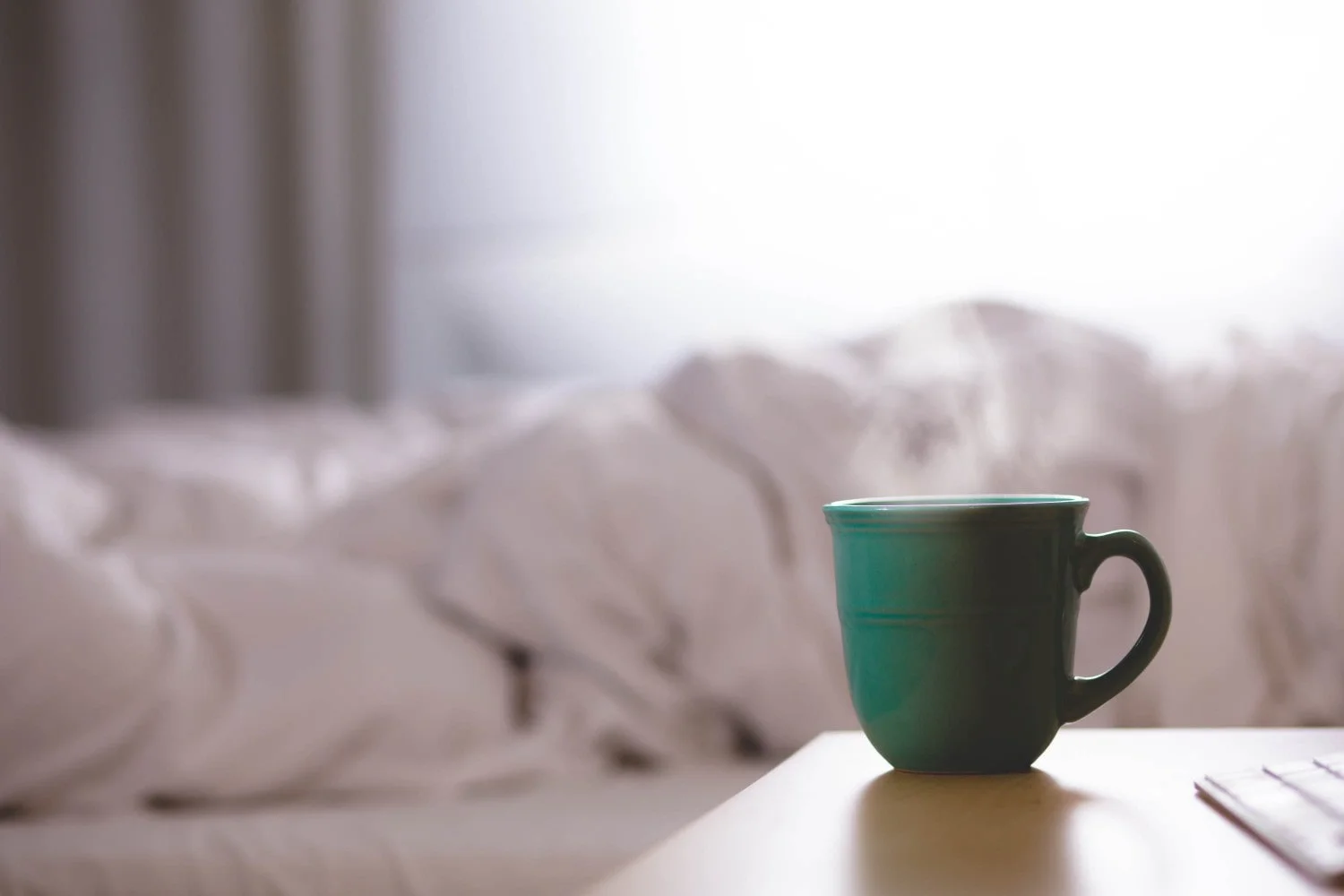Monolaurin: Benefits, Use, Dosing, Side Effects
Disclaimer: The research below is offered for information and educational purposes only and is not intended to provide medical advice. See Terms & Conditions
Monolaurin is a dietary supplement derived from lauric acid - a medium chain fatty acrid present in coconut and palm oil. Existing research explores monolaurin’s potential to exhibit antiviral, antibacterial, and antifungal properties in controlled laboratory studies. The literature review below explores some of these studies, their results, and potential impact on supporting a healthy immune system.
Summary:
Monolaurin is derived from lauric acid which is found naturally in coconut oil and human breast milk
Monolaurin has been researched for its potential to inactivate certain viruses, bacteria, yeast, and other microbes in vitro (in the lab) and in vivo (in the body)
Monolaurin can be taken as a dietary supplement in various forms and has been classified by the FDA as “Generally Recognized as Safe” (GRAS)
There are different considerations to when and how to take monolaurin, which include an introductory period to potentially avoid a “Herxheimer reaction” as well as an ongoing maintenance dose
Contents:
What is Lauric Acid?
Lauric acid is a medium chain fatty acid which has been the subject of published research exploring the potential of the acid to disrupt various viruses, yeast and bacterial infections, skin conditions, among other ailments in lab settings [Ref #1, 2]. Lauric acid can be derived from natural sources like coconut oil and palm kernel oil and is also found naturally in human breast milk. Because lauric acid can be a digestive irritant and not well tolerated when taken directly, monolaurin is the supplement form taken by most looking for the beneficial properties of lauric acid.
Learn more about Lauric Acid
What Is Monolaurin?
Monolaurin (also known as glycerol monolaurate) is a medium chain fatty acid formed from lauric acid. It is made from coconut or palm kernel oil, but also found naturally in mother’s breast milk. Monolaurin is commonly used in food production and as a dietary supplement due to its purported antiviral, antibacterial, and antimicrobial properties. Monolaurin has been tested and researched for its potential effects on enveloped viruses including Herpes, Epstein-Barr, and Influenza, as well as bacterial and yeast infections in certain lab settings [Ref# 3, 4, 5].
Learn more about Monolaurin’s Top 10 benefits.
Is Monolaurin Safe?
Monolaurin is included on the FDA's Generally Recognized as Safe (GRAS) list [Ref #6] and is already widely used in food manufacturing today. Monolaurin occurs naturally in mother's breast milk and is manufactured for commercial use from coconut oil or palm kernel oil.
How is Monolaurin Made?
Monolaurin is made from extracting the lauric acid from coconut oil either by enzymatic hydrolysis, centrifugation, and distillation [Ref #7] or the combination of cold pressed coconut oil with purified glycerol via a shaking incubator [Ref #8]. The final output is a glyceride in the form of a soapy white powder called glycerol monolaurate (monolaurin). This substance can then be capsulated and used as a dietary supplement or for other food / cosmetic purposes.
What’s the difference between Monolaurin and Coconut Oil?
Coconut oil naturally contains around 40-50% lauric acid, the principal compound used to make monolaurin. Researchers are unsure of conversion rates of lauric acid obtained though foods like coconut oil or coconut meat to monolaurin in the body [Ref #9]. Because of this fact, it is unknown how much coconut oil or coconut meat one would need to consume to receive a therapeutic dose of monolaurin. Some articles suggest it may be upwards of 100-300mL of coconut oil per day, making ingesting coconut oil unrealistic compared to monolaurin capsules [Ref #10].
How does Monolaurin work?
Monolaurin research suggests it is able to inactivate lipid-coated viruses such as herpes, cytomegalovirus, influenza, and various pathogenic bacteria and protozoa in lab settings [Ref #1, 2, 3, 11, 12].
Monolaurin purportedly works by binding to the lipid-protein envelope of the virus, thereby preventing it from attaching and entering host cells, making infection and replication impossible [Ref #2]. Other studies suggest that monolaurin disintegrates the protective viral envelope, killing the virus [Ref #13].
What is Monolaurin used for?
Monolaurin is used in the food production and cosmetics industries and is also taken as a dietary supplement. There is a collection of research which explores potential monolaurin benefits through in-vitro (outside a living organism) and in-vivo (inside a living organism) studies – select excerpts can be found on the Monolaurin Research page.
A complete list of academic studies on monolaurin along with select excerpts (including official citations) are available on the Monolaurin Research Page. Below are some curated samples of published research as they explore monolaurin’s potential impact on select microbes. All quotes below are taken directly (verbatim) from published studies and are not the opinion of this site. The research below is offered for information and educational purposes only and is not intended to provide medical advise.
Monolaurin Research and Viruses
Monolaurin studies show in-vitro the potential to inactivate a range of DNA and RNA enveloped viruses by purportedly breaking down the outer lipid membrane and destroying the virus.
“Monolaurin is lauric acid but in a safe form for human ingestion and performs the exact same anti-microbial function. From the study, it is seen that lauric acid destroys lipid coated viruses by binding to the lipid protein envelope of virus thereby preventing it from attaching and entering host cells, this kills the viral envelope seen as no growth sign in our observations, thereby killing the virus.”
Source: Ezigbo, Veronica O., Mbaegbu Emmanuella A. Extraction of Lauric Acid from Coconut Oil, Its Applications and Health Implications On Some Microorganisms. African Journal of Education, Science and Technology, April, 2016 Vol 3, No. 2 p144-147
"Antiviral fatty acids were found to affect the viral envelope, causing leakage and at higher concentrations, a complete disintegration of the envelope and the viral particles. They also caused disintegration of the plasma membranes of tissue culture cells resulting in cell lysis and death."
Source: Thormar H, Isaacs CE, Brown HR, Barshatzky MR, Pessolano T. Inactivation of Enveloped Viruses and Killing of Cells by Fatty Acids and Monoglycerides. Antimicrobial Agents and Chemotherapy. 1987 Jan;31(1):27-31.
Read more research on Monolaurin and Viruses.
Monolaurin Research and Bacteria
Monolaurin has potential antibacterial effects in vitro and in vivo against several bacteria (both Gram Positive and Gram Negative) including Staphylococus aureus (Staph, MRSA), yeast, and protozoa by purportedly disintegrating the cell membrane and blocking signal transduction.
"In the presence of Monolaurin... monolaurate had the highest bactericidal activity against E. coli and other Gram-negative bacteria… It may be concluded from various experimental results that the transport of monolaurin into the cell membrane of E. coli was stimulated by the action of citric or polyphosphoric acid"
Source: Kabara JJ. The Pharmacological Effect of Lipids. Champaign, Ill, USA: American Oil Chemist’s Society; 1978. Page 92
"Our data indicate that C(12) (lauric acid) is the most inhibitory saturated fatty acid against gram-positive organisms"
Source: Kabara JJ, Swieczkowski DM, Conley AJ, Truant JP. Fatty acids and derivatives as antimicrobial agents. Antimicrob Agents Chemother. 1972; 2(1):23-28. doi:10.1128/aac.2.1.23
"Glycerol monolaurate (GML) inhibits the expression of virulence factors in Staphylococus aureus and the induction of vancomycin resistance in Enterococcus faecalis, presumably by blocking signal transduction"
Source: Ruzin A, Novick RP. Equivalence of lauric acid and glycerol monolaurate as inhibitors of signal transduction in Staphylococcus aureus. Journal of Bacteriology. 2000 May; 182(9):2668-71
Read more research on Monolaurin and Bacteria.
Monolaurin Research and Yeast, Fungi, and other Microbials
Monolaurin benefits from a number of clinical studies which explore the potential inhibitory effects against bacterial infections such as Borrelia burgdorferi and Borrelia garinii (which are known to cause Lyme Disease), Candida albicans (which can cause yeast infections), H. Pylori or Helicobacter Pylori (which causes Gastritis), C. difficile, Giardia lamblia, and Entamoeba histolytica (which can cause diarrhea) in lab settings.
"The most effective antimicrobial compounds against all morphological forms of the two tested Borrelia sp. were baicalein and monolaurin. This might indicate that the presence of fatty acid and phenyl groups is important for comprehensive antibacterial activity."
Source: Goc, A., Niedzwiecki, A. and Rath, M. (2015), In vitro evaluation of antibacterial activity of phytochemicals and micronutrients against Borrelia burgdorferi and Borrelia garinii. J Appl Microbiol, 119: 1561–1572. doi:10.1111/jam.12970
“The results from this study showed that lauric acid has an anti-microbial effect. It is most effective against Candida albicans and then staphylococcus followed by Aspergillus flavus...This goes to say that it is effective against fungus, several viruses and ... gram positive bacteria. The study proves that lauric acid is effective against viral, bacterial (gram positive) and fungal infections such as common cold, swine flu, genital herpes, blister etc.”
Source: Ezigbo, Veronica O., Mbaegbu Emmanuella A. Extraction of Lauric Acid from Coconut Oil, Its Applications and Health Implications On Some Microorganisms. African Journal of Education, Science and Technology, April, 2016 Vol 3, No. 2 p144-147
Read more research on Monolaurin, Yeast, and Fungi.
Monolaurin Research and Skin Health
Skin and mucosa are known as the barriers against pathogens that the body is exposed to. Without this barrier, the body may be at an elevated risk of infection.
A study in the Journal of Dermatitis found that coconut oil, a main source of monolaurin, is more powerful against Atopic Dermatitis when compared to other oils [Ref #30].
“Virgin coconut oil (VCO) and monolaurin's objective-SCORAD severity index (OSSI) reduction and in vitro broad-spectrum activity against Staphylococcus aureus (SA) (given clinical validity here), fungi, and viruses may be useful in the proactive treatment of Atopic dermatitis (AD) colonization.”
Source: Verallo-Rowell, Vermén M.; Dillague, Kristine M.; Syah-Tjundawan, Bertha S. Novel Antibacterial and Emollient Effects of Coconut and Virgin Olive Oils in Adult Atopic Dermatitis. Dermatitis: November-December 2008 - Volume 19 - Issue 6 - p 308–315
Another study in the Journal of Drugs in Dermatology suggested that monolaurin extracts may be potent against several bacterial species that can cause skin infections, including Staphylococcus aureus and Streptococcus spp, when studied in lab settings.
“Monolaurin has statistically significant in vitro broad-spectrum sensitivity against Gram-positive and Gram-negative bacterial isolates from superficial skin infections. Most of the bacteria did not exhibit resistance to it.”
Source: Carpo BG, Verallo-Rowell VM, Kabara J. Novel antibacterial activity of monolaurin compared with conventional antibiotics against organisms from skin infections: an in vitro study. J Drugs Dermatol. 2007 Oct;6(10):991-8.
In some experiments, the monolaurin extracts were more potent against these bacteria as compared to conventional antibiotics [Ref #31].
Monolaurin has statistically significant in vitro broad-spectrum sensitivity against Gram-positive and Gram-negative bacterial isolates from superficial skin infections. Most of the bacteria did not exhibit resistance to it.
Source: Carpo BG, Verallo-Rowell VM, Kabara J. Novel antibacterial activity of monolaurin compared with conventional antibiotics against organisms from skin infections: an in vitro study. J Drugs Dermatol. 2007 Oct;6(10):991-8.
On human skin, monolaurin may help act as an antiseptic with potential broad-spectrum effects. [Ref #40]
Read more research on Monolaurin Benefits and Skin Infections.
Monolaurin Research and Digestive Health
Gastritis and GERD (Gastro-Esophageal Reflux Disease)
H. Pylori (Helicobacter Pylori) is bacteria which infects the stomach and gut and can cause complications like Gastritis or even Gastro-Esophageal Reflux Disease (GERD).
Research suggests that monolaurin may be effective in inactivating H. Pylori, regardless of stomach pH [Ref #32].
"Eight of 12 lipids tested showed high activity against H. pylori, monocaprin and monolaurin being the most active. The high activity of monoglycerides against H. pylori suggests that they may be useful as active ingredients in pharmaceutical formulations."
Source: Bergsson G, Steingrı́msson O, Thormar H. Bactericidal effects of fatty acids and monoglycerides on Helicobacter pylori. International Journal of Antimicrobial Agents. Volume 20, Issue 4, October 2002, Pages 258–262
One study demonstrated that monolaurin could inactivate gram negative bacteria including H. Pylori, and was accomplished with minimal side effects like bacterial resistance [Ref #33].
"The results in this research provide a possible strategy for a new treatment for H. pylori infection that would be characterised by minimal side-effects and low bacterial resistance. Unsaturated fatty acids (FAs) and monoglycerides (MGs) can be generated from triglycerides in certain foods"
Source: Sun CQ, O’Connor CJ, Roberton AM. Antibacterial actions of fatty acids and monoglycerides against Helicobacter pylori. FEMS Immunology and Medical Microbiology 36 (2003) p 9-17
Read more research on Gastritis and GERD.
Leaky Gut
In a leaky gut, the barrier inside the bowel that was once effective in the absorption of nutrients malfunctions and allows the entry of large molecules and germs producing a wide spectrum of symptoms. Leaky gut is associated with chronic fatigue syndrome, asthma, autism, lupus, multiple sclerosis, scleroderma, migraines and even food allergies [Ref #34]. In this situation, the gut microbiome is compromised. Monolaurin may become an interesting supplement in this case.
A study found that consumption of medium-chain fatty acids such as monolaurin from coconut oil helped in remodeling the gut microbiome by altering the distribution of good bacteria where they were needed the most [Ref #35]. In addition to this, taking monolaurin was suggested to have some limited anti-obesity properties.
"Here, we describe how dietary medium chain triglycerides (MCT), previously found to promote lipid catabolism, energy expenditure and weight loss, can ameliorate metabolic health via their capacity to improve both intestinal ecosystem and permeability. MCT-enriched diets could therefore be used to manage metabolic diseases through modification of gut microbiota."
Source: S. Rial, A. Karelis, K. Bergeron, & C. Mounier. Gut Microbiota and Metabolic Health: The Potential Beneficial Effects of a Medium Chain Triglyceride Diet in Obese Individuals. Nutrients. 2016.
Read more research regarding leaky gut.
Learn more about Digestive Health and Monolaurin.
Monolaurin Research and Lyme Disease
A 2015 in-vitro study tested monolaurin on the bacteria Borrelia burgdorferi and Borrelia garinii (the bacteria which cause Lyme disease in humans) and concluded:
"The most effective antimicrobial compounds against all morphological forms of the two tested Borrelia sp. were baicalein and monolaurin. This might indicate that the presence of fatty acid and phenyl groups is important for comprehensive antibacterial activity." [Ref #36]
Source: Goc A, Niedzwiecki A, Rath M. In vitro evaluation of antibacterial activity of phytochemicals and micronutrients against Borrelia burgdorferi and Borrelia garinii. J Appl Microbiol. 2015;119(6):1561-1572. doi:10.1111/jam.12970
Some treatment protocols which leverage monolaurin's potential health properties been prescribed by some medical professionals in the presence of Lyme. One doctor and author, Dr. Richard Horowitz, whose clinic has treated over 12,000 patients over the past 26 years wrote about Monolaurin in his 2017 book:
"Monolaurin, a coconut oil extract, has also recently been shown to have the ability to significantly affect three morphological forms of Borrelia burgdoferi and Borrelia garinii: spirochetes, latent round body forms, and borrelia biofilms, while simultaneously deceasing yeast overgrowth in the GI tract." [Ref #37]
Source: Horowitz, Richard. How Can I Get Better?: An Action Plan for Treating Resistant Lyme & Chronic Disease. St. Martin's Griffin, 2017. P73
Read more research on Monolaurin and Lyme Disease.
Monolaurin Research and Biofilms
Biofilms often cause infections that are complex, chronic, and immune to antibiotic treatment. The effects of contamination are often widespread and costly: from clinical treatment infections to outbreaks like salmonella and recurring fungal infection [Ref #38].
Monolaurin has been found in some studies to disrupt specific strains of salmonella with single lipopolysaccharide layers. The lipopolysaccharide layers of biofilms are responsible for adhesion, growth, and protection of bacterial and fungal culture. Monolaurin's potential immune supporting properties may act as a biofilm disruptor in this layer [Ref #39], but it’s clinical application has not been proven.
“Both glycerol monolaurate (GML) and lauric acid were effective in inhibiting biofilm development as measured by decreased numbers of viable biofilm-associated bacteria as well as decreased biofilm biomass. Compared with lauric acid on a molar basis, GML represented a more effective inhibitor of biofilms formed by either S. aureus or E. faecalis.” [Ref #41]
Source: Hess DJ, Henry-Stanley MJ, Wells CL. The Natural Surfactant Glycerol Monolaurate Significantly Reduces Development of Staphylococcus aureus and Enterococcus faecalis Biofilms. Surg Infect (Larchmt). 2015 Oct;16(5):538-42. doi: 10.1089/sur.2014.162. Epub 2015 Jun 25.
Read more research on "busting" Biofilms
Breast Milk Source
Human breast milk is on average 6.2% lauric acid, and breastfeeding provides infants their first introduction to monolaurin.
Breastfeeding provides infants with nutrients for growth and development as well as immune protection to compensate for the immature and inexperienced defense mechanisms at mucosal surfaces [Ref #28].
Breast milk not only provides excellent nutritional value, it also plays a very important role in protecting and supporting the immune function of infants though its healthy fat content [Ref #29].
Lauric Acid levels in Breast Milk
Lauric acid levels in breast milk can vary. Many factors may contribute to higher or lower lauric acid detected in breast milk, which may include:
Age: Mothers younger than 30 years old had higher levels of lauric acid detected in their breast milk compared to older mothers [Ref # 22]
Diet: A high-carbohydrate diet could contribute to higher levels of lauric acid in breast milk [Ref #23, 24]. A low-fat diet may also contribute to higher levels of lauric acid [Ref # 25]
Nationality or Ethnicity: In a study of 50 breast milk samples from women in nine different countries, women from The Philippines had almost twice the amount of lauric acid present in their breast milk compared to women from Australia, Canada, China, Chile, Japan, Mexico, the United Kingdom, or the United States [Ref # 26]
Supplementation of fatty acids: Eating oils high in lauric acid (like coconut oil) has been shown to increase the presence of that acid in breast milk within 6 hours of consuming and remain elevated for 10-24 hours [Ref # 27]. Eating 40 grams (about 3 tablespoons) of coconut oil has been shown to increase lauric acid in the milk of a nursing mother from 3.9% to 9.6% after 14 hours. [Ref # 27]
Delivery: Levels of lauric acid and other acids including myristic, alpha-linolenic, arachidonic, and eicosapentaenoic acid were significantly lower in women who had caesarean deliveries versus vaginal deliveries [Ref # 22]
Read more research on Monolaurin and Breast Milk.
Coconut Oil source
May people ask, “why don’t I just take coconut oil?”. Coconut oil contains around 40 to 50% of the medium chain fatty acid lauric acid, which when found on food labels is typically represented as C12. As indicated earlier in the article, it is unknown what percentage of lauric acid actually converts to monolaurin in the body when consumed. This may require individuals to take many spoonfuls of oil to achieve one dose of concentrated monolaurin. Some people may find this unpleasant or inconvenient.
Consider this simple example:
If one tablespoon of coconut oil were converted to 50% Monolaurin, you would need to take 6.5 teaspoons of coconut oil to achieve the amount of Monolaurin in one 600mg capsule (assuming one teaspoon of coconut oil is 0.924 g/cm3 [grams per cubic centimeter] is approximately 184.8 milligrams). To get the equivalent of one daily therapeutic dose of six capsules, you would need to drink 0.81 cups of coconut oil per day(!).
If you're looking to buy monolaurin for the first time, compare monolaurin brands, research monolaurin reviews, consider the information in the Monolaurin Buying Guide. There is more to buying monolaurin than the capsule weight or count. Many factors should be considered when selecting a brand of monolaurin.
Monolaurin Buying Checklist:
Source of Monolaurin (Coconut vs. Palm): Look for a label which confirms coconut source - which may be higher quality and potency than palm kernel oil.
Delivery of Monolaurin (Capsule vs. Pellets vs. Powder): Pellets may not fully digest, and power tastes way too soapy / bitter. Capsule is the most convenient, precise, and popular format for taking Monolaurin as a supplement.
Milligrams per Capsule (300mg, 600mg, 800mg): Some doses of monolaurin can get quite high, so a higher capsule fill might help reduce the need to swallow multiple capsules per day. Always note the serving size and “amount per serving”. Often, manufactures will increase a serving size to make the amount per serving appear larger (For example, a label claim of 990mg per dose is actually for two capsules - a mere 495mg per capsule).
Capsule Count per Bottle (60, 90, 100 capsules): Since monolaurin can be taken over long periods of time, and doses may increase during an immune challenge, having some extra capsules on hand can be advantageous. Although a bottle may have a high capsule count, be sure to observe how many milligrams are offered per capsule - you may be getting less product per bottle, despite a high capsule count.
Excipient (Natural vs. Synthetic): Synthetic excipients like magnesium stearate (required for high speed encapsulation machines) are cheap but may come with unwanted side effects like stomach irritation or disrupting absorption. Natural rice powder can be used in place of these synthetics and may not cause unwanted side effects.
Additives (Pure Formula vs. Bulk): Some manufacturers bulk up their products with unwanted additives like Inosine, Glycerol, Vitamin C, or Echinacea. While individually these additives may provide some benefit, they may also interfere with the monolaurin delivery. When researching and deciding to buy monolaurin, look for purity.
Packaging Features (Safety and Quality Control Measures): An important but often overlooked component of supplements are the physical packaging and safety features put in place. When you buy monolaurin, always look for: desiccant pack, cotton pack, foil safety seal, protective neckband, Lot # and Expiration Date
Manufacturing (Facility Location and Certifications): A GMP facility, FDA registered, and USA-made certifications provide a degree of confidence over non-certified manufacturing or foreign facilities.
Label (Claims, Formatting, and Research): Always look for proper citations, label formatting, and research when selecting a monolaurin brand, as this demonstrates FDA compliance and a well-managed operation
Reviews (Opinion vs. Professional Research): Customer reviews should be taken with some healthy skepticism, as there are some unfortunate incidents of both positive and negative review manipulation by some competitors. More weight might be placed on well-documented published research and professional medical advice which is not opinion.
Read the full checklist in the Monolaurin Buying Guide.
Ready to buy? Check out the products in the Product Locator.
Many of the most common questions are addressed in the Monolaurin Dosing Guide.
How to take Monolaurin: Powder, Pellets, Capsules, or Pure Coconut Oil
There are a couple ways to get monolaurin – through diet and through supplementation. Some of the most common “delivery” methods are:
Pure Coconut Oil - Coconut oil contains around 49% lauric acid. Since lauric acid is converted into monolaurin in the human body, you might assume you can get monolaurin through coconut oil without taking a supplement. Unfortunately, it is difficult to estimate just how much of the lauric acid from coconut oil is converted to monolaurin, but one article suggests that it is less than 6%. Given a therapeutic dose of monolaurin can reach upwards of 3 to 9 grams of monolaurin, one would need to consume an unrealistic 100 - 300 mL of coconut oil per day [Ref #19].
Pellets: Pellets may offer a high dose on the label, but they may pass though the digestive tract un-absorbed and may contain higher amounts of potentially stomach-irritating glycerol. Pellets are relatively expensive per-jar and potentially inconvenient to transport / fit in pill organizers.
Capsules: Capsules offer are precise dosage, are easy to transport, ensure complete digestion in the stomach and intestine, and come in either animal gelatin or vegetable cellulose formulas for those with vegetarian considerations.
Powder: Monolaurin by nature has a strong soapy and bitter taste. Taking monolaurin in powder form, even when mixed with another substance like apple sauce, can be very unpleasant and is not well tolerated by most.
Read more on Monolaurin Delivery Options
Should Monolaurin be taken with or without food?
You can take monolaurin with or without food and with any liquid, without impact to efficacy or absorption. You can take monolaurin on an empty stomach, however those with sensitive stomachs should take monolaurin with food as the supplement has a natural "soapy" taste which may be unpleasant to some. Food may also aid in the bioavailability of some supplements.
When to take Monolaurin
Buildup
For those new to monolaurin (or supplements in general) and looking to avoid potential "die off" symptoms, a slow introduction and buildup of the supplement may help your body acclimate to the supplement. It is recommended to start with low doses of monolaurin and slowly build up to a higher dose over time.
Maintenance
For those looking to maintain a healthy state and support their immune response over time, taking a moderate level of monolaurin supplements daily may help provide the support your body needs to stay healthy perpetually.
How long does it take Monolaurin to work?
Because every body is unique, there are no established timeline to see results from a supplement like monolaurin. Any health routine requires patience and diligence to see the best results. Monolaurin should be taken alongside healthy lifestyle changes (such as adequate sleep, regular exercise, and better eating habits), and under the direction of a healthcare professional.
Taking Monolaurin for Long Periods
Monolaurin may be safe to take in a variety of doses and lengths of time. Monolaurin may be used to maintain good health over time, as research suggests the health benefits from monolaurin can be reversed when the supplement is removed. Furthermore, monolaurin has been shown to possess additive benefits, meaning when monolaurin is combined with other compounds health benefits are also increased [Ref # 20, 21].
Can you take too much Monolaurin?
The amount of monolaurin an individual may choose to take before seeing a positive response can depend on a number of factors including age, weight, personal health goals, and general sensitivity to supplements. Some people see a benefit from a single 600mg capsule per day, while others may take upwards of 3-5 grams. Starting with a low dose and gradually increasing until positive effects are realized is a recommended approach. If you have specific questions, consider the information in the Dosing Guide for Monolaurin.
Read more about Taking too much Monolaurin.
Monolaurin in High Doses
Monolaurin may be taken at high levels for short periods of time. Some literature goes as far as suggesting a dosage of 3-9 grams per day is needed, which equates to upwards of 15 capsules of 600mg [Ref #14]. While this may not be necessary or common, it should not be harmful. It is not recommend these elevated doses for extended periods of time. Everything should be in moderation.
Maximum dosage of Monolaurin
According to some literature sources, there is no defined upper limit of monolaurin. Monolaurin is found naturally in coconut and palm oil, which has been used in personal and commercial food preparation and production. Monolaurin has been listed as "Generally Regarded As Safe" by the FDA [Ref #15], stating "In accordance with 184.1(b)(1), the ingredient is used in food with no limitation other than current good manufacturing practice. The affirmation of this ingredient as generally recognized as safe (GRAS) as a direct human food ingredient…" However, the FDA does not elaborate on any daily maximums. It is not recommend to exceed 6-9 grams / day for any length of time.
Monolaurin and Drug Resistance
Many bacteria and viruses can develop resistance to antibiotic or antiviral drugs over time. This means that the prescription drugs may become less effective in treating or preventing the spread of the disease. Monolaurin has been shown in some lab studies to not contribute to bacteria resistance. [Ref #: 16, 17, 18]
Children and Monolaurin
Clinical research and guidance do not include children, and therefore the safety and efficacy are unknown. It is not recommended to give monolaurin to children.
Transporting Monolaurin
Some health products like probiotics can be sensitive to temperature – extreme heat or cold – which may be experienced during shipping, storage, travel, or in the home. Monolaurin is a very hardy substance and tests indicate high heat nor humidity effect the efficacy or stability of the product
Monolaurin
Side Effects
Herxheimer Reaction
The Herxheimer (Herx, sometimes Herxing) Reaction or "Die off" symptom is a side effect producing symptoms ironically similar to a cold or flu.
This complication is the result of a reaction to the rapid release of endotoxin-like products in the body caused by the death of various virus, bacteria, yeast, and other microbes. When microbes are destroyed by antibiotics, medications, or supplements, proteins and cytokines are released which the immune system may have an inflammatory response.
The symptoms of a die-off or herx reaction are strikingly similar to the flu. This is your body's immune response to what it thinks is an infection. A typical herxing reaction or die-off symptoms include body aches, muscle pain, sore throat, sweating, lethargy, chills, nausea, and other flu-like symptoms. If symptoms get worse, this is not necessarily a sign that the treatment is not working - in fact, it could be the opposite - the treatment may be so effective at killing the infection your body is unable to process all the microbial waste.
The best method is to avoid a potential herx reaction in the first place by adopting a "low and slow" method of introducing supplements into your routine. If experiencing a due off or herx reaction you should consider reducing or limiting the supplement until your body is able to better cope with the die off and drink plenty of fluids to aid in the removal of cytokines and proteins in the system.
Read more about Monolaurin and the Herxheimer (Die off) Reaction.
Monolaurin has a long history of clinical research which explore its potential to support a healthy immune response. Monolaurin comes in many forms (capsule, pellet) and from various sources (coconut, palm oil), and varying standards of quality. When choosing monolaurin as a dietary supplement, care should be taken to find a trusted and established brand. Monolaurin, like all supplements, should be taken under the supervision of a healthcare professional.
interested in trying monolaurin?
Consider some of the products located on this external site:
Lieberman S, Enig MG, Preuss HG. A Review of Monolaurin and Lauric Acid Natural Virucidal and Bactericidal Agents. Alternative & Complimentary Therapies, December 2006. 12(6): 310-314.
Isaacs CE, Kim KS, Thormar H. Inactivation of enveloped viruses in human bodily fluids by purified lipids. Annals of the New York Academy of Sciences. 1994 Jun 6;724:457-64.
Ezigbo, Veronica O., Mbaegbu Emmanuella A. Extraction of Lauric Acid from Coconut Oil, Its Applications and Health Implications On Some Microorganisms. African Journal of Education, Science and Technology, April, 2016 Vol 3, No. 2 p144-147
Hierholzer, J.C. and Kabara, J.J. In Vitro Effects of Monolaurin Compounds on Enveloped RNA and DNA Viruses. Journal of Food Safety 4:1-12 (1982)
Goc, A., Niedzwiecki, A. and Rath, M. (2015), In vitro evaluation of antibacterial activity of phytochemicals and micronutrients against Borrelia burgdorferi and Borrelia garinii. J Appl Microbiol, 119: 1561–1572. doi:10.1111/jam.12970
FDA : 21CFR184.1505 ; https://www.accessdata.fda.gov/scripts/cdrh/cfdocs/cfcfr/CFRSearch.cfm?fr=184.1505
Sumit NANDI, Sarbani GANGOPADHYAY, Santinath GHOSH, “Production of Medium Chain Glycerides and Monolaurin from Coconut Acid Oil by Lipase-Catalyzed Reactions”, Journal of Oleo Science, 2004, Volume 53, Issue 10, Pages 497-501, Released September 10, 2004, Online ISSN 1347-3352, Print ISSN 1345-8957
Pinyaphong, P., Sriburi, P., & Phutrakul, S. “Synthesis of Monoacylglycerol from Glycerolysis of Crude Glycerol with Coconut Oil Catalyzed by Carica papaya Lipase.” World Academy of Science, Engineering and Technology International Journal of Chemical and Molecular Engineering. Vol:6, No:10, 2012
"Monolaurin: Benefits, Dosage, and Side Effects". Healthline. 2017-08-22. Retrieved 2019-07-19.
"Pharmacological effects of coconut oil vs. monoglycerides". ResearchGate. Retrieved 2019-07-19.
Bergsson G, Arnfinnsson H, Karlsson SM, Steingrímsson O, Thormar H. In Vitro Inactivation of Chlamydia trachomatis by Fatty Acids and Monoglycerides. American Society for Microbiology 9 February 1998
Kabara JJ, Vrable R. Antimicrobial lipids: natural and synthetic fatty acids and monoglycerides. Lipids. 1977 Sep;12(9):753-9.
Thormar, H; Isaacs, C E; Brown, H R; Barshatzky, M R; Pessolano, T (1 January 1987). "Inactivation of enveloped viruses and killing of cells by fatty acids and monoglycerides". Antimicrobial Agents and Chemotherapy. 31 (1): 27–31
Kabara JJ. Pharmacological effects of coconut oil vs. monoglycerides. Inform June 2005; Volume 16 p386-7. http://aocs.files.cms-plus.com/inform/2005/6/p386-387.pdf
FDA : 21CFR184.1505 ; https://www.accessdata.fda.gov/scripts/cdrh/cfdocs/cfcfr/CFRSearch.cfm?fr=184.1505
Ruzin A, Novick RP. Equivalence of lauric acid and glycerol monolaurate as inhibitors of signal transduction in Staphylococcus aureus. Journal of Bacteriology. 2000 May; 182(9):2668-71
Carpo BG, Verallo-Rowell VM, Kabara J. Novel Antibacterial activity of Monolaurin compared with conventional antibiotics against organisms from skin infections: an in vitro study. Journal of Drugs in Dermatology : JDD [2007, 6(10):991-998]
Ruzin A, Novick RP. Glycerol monolaurate inhibits induction of vancomycin resistance in Enterococcus faecalis. Journal of Bacteriology. 1998 Jan; 180(1):182-5
Kabara JJ. Pharmacological effects of coconut oil vs. monoglycerides. Inform June 2005; Volume 16 p386-7.
Hornung B, Amtmann E, Sauer G. Lauric acid inhibits the maturation of vesicular stomatitis virus. The Journal of General Virology. 1994 Feb;75 ( Pt 2):353-61.
Isaacs CE. The antimicrobial function of milk lipids. Advances in Nutritional Research. 10:271-85, 2001.
Sinanoglou VJ, Cavouras D, Boutsikou T, et al. Factors affecting human colostrum fatty acid profile: A case study. PLoS One. 2017;12(4):e0175817. Published 2017 Apr 14. doi:10.1371/journal.pone.0175817
Mohammad MA, Sunehag AL, Haymond MW. De novo synthesis of milk triglycerides in humans. Am J Physiol Endocrinol Metab. 2014 Apr 1; 306(7):E838-47.
Nasser R, Stephen AM, Goh YK, Clandinin MT. The effect of a controlled manipulation of maternal dietary fat intake on medium and long chain fatty acids in human breast milk in Saskatoon, Canada. Int Breastfeed J. 2010;5: 3
Craig-Schmidt MC, Weete JD, Faircloth SA, Wickwire MA, Livant EJ. The effect of hydrogenated fat in the diet of nursing mothers on lipid composition and prostaglandin content of human milk. Am J Clin Nutr 1984;39:778–86.
Rebecca Yuhas, Kathryn Pramuk, Eric L. Lien. Human milk fatty acid composition from nine countries varies most in DHA. Lipids. September 2006, Volume 41, Issue 9, pp 851–858
C A Francois S L Connor R C Wander W E Connor. Acute effects of dietary fatty acids on the fatty acids of human milk. The American Journal of Clinical Nutrition, Volume 67, Issue 2, 1 February 1998, Pages 301–308, https://doi.org/10.1093/ajcn/67.2.301
C A Francois S L Connor R C Wander W E Connor. Acute effects of dietary fatty acids on the fatty acids of human milk. The American Journal of Clinical Nutrition, Volume 67, Issue 2, 1 February 1998, Pages 301–308, https://doi.org/10.1093/ajcn/67.2.301
Margrit Hamosh, Jerry A. Peterson, Theresa R. Henderson, Ciaran D.Scallan, Radwin Kiwan, Roberto L.Ceriani, Martine Armand, Nifin R. Mehta, Paul Hamosh. Protective function of human milk: The milk fat globule. Seminars in Perinatology Volume 23, Issue 3, June 1999, Pages 242-249
Verallo-Rowell, Vermén M.; Dillague, Kristine M.; Syah-Tjundawan, Bertha S. Novel Antibacterial and Emollient Effects of Coconut and Virgin Olive Oils in Adult Atopic Dermatitis. Dermatitis: November-December 2008 - Volume 19 - Issue 6 - p 308–315 doi: 10.2310/6620.2008.08052
Carpo BG, Verallo-Rowell VM, Kabara J. Novel antibacterial activity of monolaurin compared with conventional antibiotics against organisms from skin infections: an in vitro study. J Drugs Dermatol. 2007 Oct;6(10):991-8.
Bergsson G, Steingrı́msson O, Thormar H. Bactericidal effects of fatty acids and monoglycerides on Helicobacter pylori. International Journal of Antimicrobial Agents. Volume 20, Issue 4, October 2002, Pages 258–262
Sun CQ, O’Connor CJ, Roberton AM. Antibacterial actions of fatty acids and monoglycerides against Helicobacter pylori. FEMS Immunology and Medical Microbiology 36 (2003) p 9-17
“Leaky gut syndrome”. NHS Choices. https://www.nhs.uk/conditions/leaky-gut-syndrome/
S. Rial, A. Karelis, K. Bergeron, & C. Mounier. Gut Microbiota and Metabolic Health: The Potential Beneficial Effects of a Medium Chain Triglyceride Diet in Obese Individuals. Nutrients. 2016.
Goc, A., Niedzwiecki, A. and Rath, M. (2015), In vitro evaluation of antibacterial activity of phytochemicals and micronutrients against Borrelia burgdorferi and Borrelia garinii. J Appl Microbiol, 119: 1561–1572. doi:10.1111/jam.12970
Horowitz, Richard. How Can I Get Better?: An Action Plan for Treating Resistant Lyme & Chronic Disease. St. Martin's Griffin, 2017. P73
Giaouris, Efstathios et al. “Intra- and Inter-Species Interactions within Biofilms of Important Foodborne Bacterial Pathogens.” Frontiers in Microbiology 6 (2015): 841. PMC. Web. 16 June 2018.
Mueller, Elizabeth A., and Patrick M. Schlievert. “Non-Aqueous Glycerol Monolaurate Gel Exhibits Antibacterial and Anti-Biofilm Activity against Gram-Positive and Gram-Negative Pathogens.” Ed. Gunnar F Kaufmann. PLoS ONE10.3 (2015): e0120280. PMC. Web. 16 June 2018.
Agero, A. L., & Verallo-Rowell, V. M. (2004). A randomized double-blind controlled trial comparing extra virgin coconut oil with mineral oil as a moisturizer for mild to moderate xerosis. Dermatitis, 15(3), 109-116.
Hess DJ, Henry-Stanley MJ, Wells CL. The Natural Surfactant Glycerol Monolaurate Significantly Reduces Development of Staphylococcus aureus and Enterococcus faecalis Biofilms. Surg Infect (Larchmt). 2015 Oct;16(5):538-42. doi: 10.1089/sur.2014.162. Epub 2015 Jun 25.


